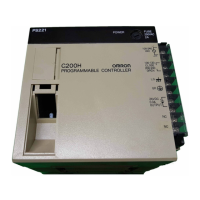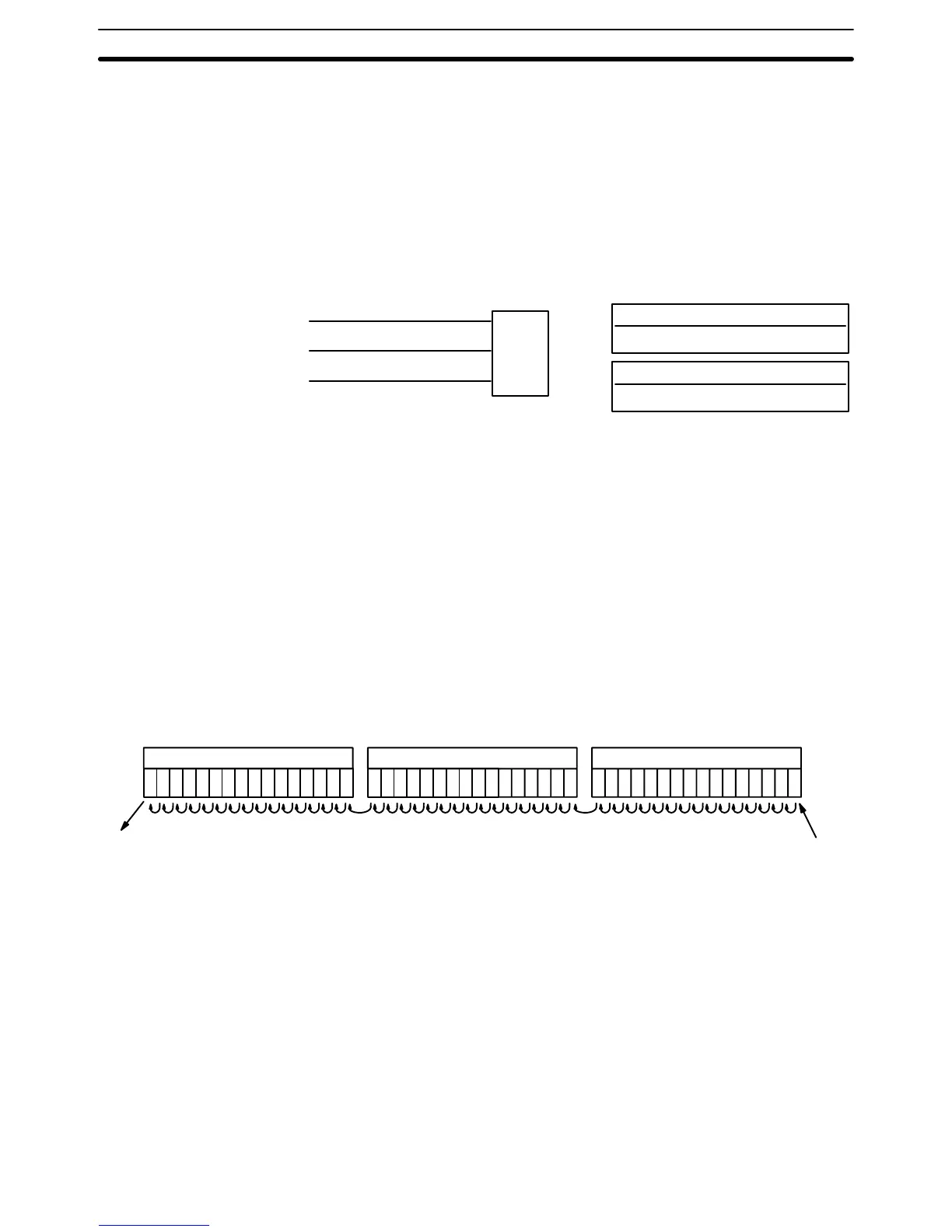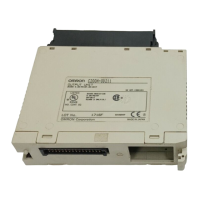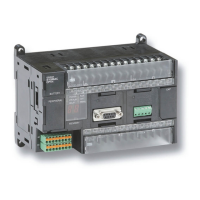150
5-15 Data Shifting
All
of the instructions described in this section are used to shift data, but in dif
fer-
ing
amounts and directions. The first shift instruction, SFT(10), shifts an execu
-
tion condition into a shift register; the rest of the instructions shift data that is al
-
ready in memory.
5-15-1 SHIFT REGISTER – SFT(10)
St: Starting word
IR, SR, AR, HR, LR
E: End word
IR, SR, AR, HR, LR
Operand Data Areas
Ladder Symbol
I
P
SFT(10)
St
E
R
Limitations St
must be less than or equal to E, and St and E must be in the same data area.
If
a bit address in one of the words used in a shift register is also used in an in
-
struction that controls individual bit status (e.g., OUT, KEEP(11)), an error
(“COIL
DUPL”) will be generated when program syntax is checked on the Pro
-
gramming Console or another Programming Device. The program, however,
will
be executed as written. See
Example 2: Controlling Bits in Shift Registers
for
a programming example that does this.
Description SFT(10) is controlled by three execution conditions, I, P, and R. If SFT(10) is
executed
and 1) execution condition P is ON and
was OFF the last execution,
and 2) R is OFF, then execution condition I is shifted into the rightmost bit of a
shift
register defined between St and E, i.e., if I is ON, a 1 is shifted into the regis
-
ter;
if I is OFF
, a 0 is shifted in. When I is shifted into the register
, all bits previously
in the register are shifted to the left and the leftmost bit of the register is lost.
Execution
condition I
Lost
data
E
St+1, St+2, ...
St
The
execution condition on P functions like a dif
ferentiated instruction, i.e., I will
be
shifted into the register only when P is ON and was
OFF the last time SFT(10)
was
executed.
If execution condition P has not changed or has gone from ON to
OFF, the shift register will remain unaffected.
St
designates the rightmost word of the shift register; E designates the leftmost.
The
shift register includes both of these words and all words between them. The
same
word may be designated
for St and E to create a 16-bit (i.e., 1-word) shift
register.
When
execution condition R goes ON, all bits
in the shift register will be turned
OFF
(i.e., set to 0) and the shift register will not operate until R goes OFF again.
Flags There are no flags affected by SFT(10).
Data Shifting Section 5-15

